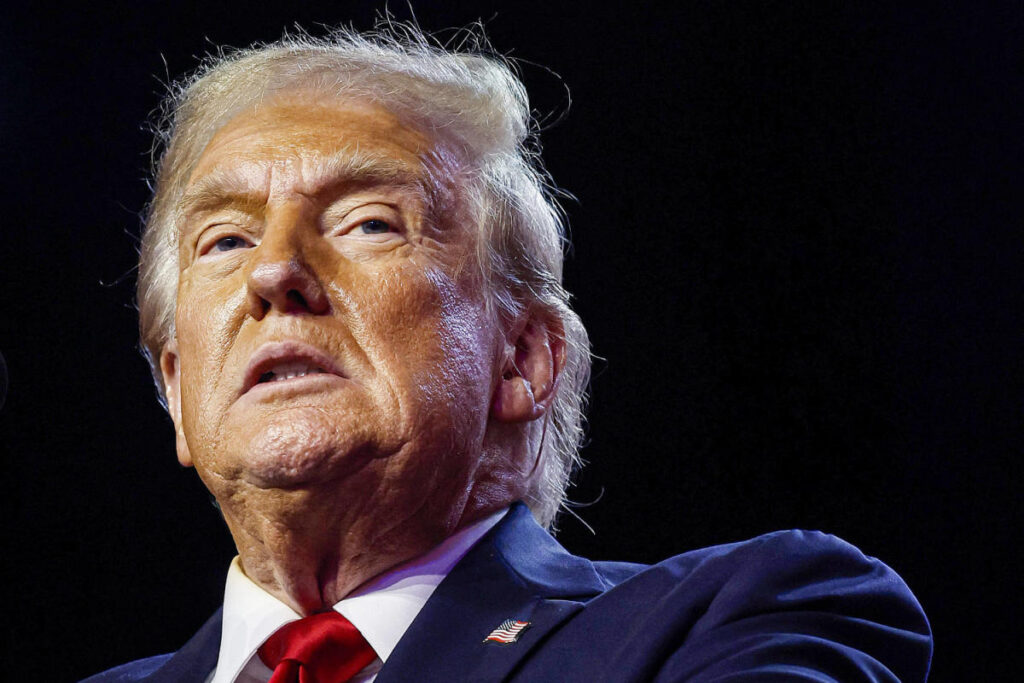In a tumultuous turn of events on Wednesday, President-elect Donald Trump and Vice President-elect JD Vance publicly denounced a critical bipartisan government funding bill that aimed to keep the government running until March 14. Their joint statement sent Republican leaders into disarray as they scrambled to find an alternative plan, particularly in the House of Representatives, where Trump’s influence remains substantial. With the threat of a government shutdown looming at 12:01 a.m. Saturday, Republican lawmakers faced mounting pressure as Trump’s rejection of the bill left them without a clear path forward. The initial proposal had been unveiled just a day prior, and House Majority Leader Steve Scalise confirmed that it was effectively dead following Trump’s intervention.
Trump’s criticism was directed at both Senate Majority Leader Chuck Schumer and President Joe Biden, accusing them of obstructing aid to farmers and disaster relief due to Democrats’ demands in negotiations. Moreover, in a surprising demand that diverged from ongoing discussions, Trump insisted that the bill should incorporate a debt ceiling increase—an issue not anticipated to arise until mid-next year. In urging that the debt ceiling be addressed presently, Trump made it clear he wanted to shift the political burden onto Biden’s administration, suggesting that Republicans should confront the Democrats on this issue immediately. Trump’s call for a “temporary funding bill WITHOUT DEMOCRAT GIVEAWAYS” underscored his hardline stance on Republican unity, as he warned GOP members of the political ramifications for those who defy his preferences.
The reaction from within the Republican Party varied significantly, reflecting both skepticism and a desire for alignment with Trump’s reinforced strategies. Some Republicans acknowledged the challenge of integrating the debt ceiling into a funding bill due imminently without facing significant opposition from Democrats. This internal divide was accentuated by House Minority Leader Hakeem Jeffries, who cautioned that abandoning the bipartisan agreement would put the onus of a government shutdown squarely on the Republicans. As Trump continued to underscore the importance of steadfastness against any perceived Democratic overreach, White House press secretary Karine Jean-Pierre slammed the GOP’s approach, emphasizing that Republicans should uphold their commitments to the bipartisan agreement to avoid harming Americans.
Elon Musk, a vocal Trump ally and entrepreneur, also weighed in shortly after the funding bill was released, branding it as one of the “worst bills ever written” and suggesting a government shutdown until Trump takes office. Musk’s influence seemed to galvanize rebel GOP members who rallied against the proposed legislation, which included elements many viewed as excesses, including provisions for a pay raise for lawmakers. Trump’s comments echoed similar concerns, suggesting that it was not an appropriate moment to consider such increases when the government faced a potential shutdown.
As the crisis loomed, several options emerged as potential alternatives to the stricken funding proposal. One concept gaining traction was the passage of a “clean” continuing resolution, which would maintain federal funding at existing levels while likely incorporating disaster-relief funding. The prospect of reaching a consensus on a clean resolution without additional policy implications provided a potential pathway forward that could satisfy both far-right factions within the party and moderates who were seeking to avert a shutdown. Lawmakers expressed cautious optimism that they could rally around a streamlined bill, reflecting the pressure from outside forces, including influential public personalities like Musk.
The unfolding situation illustrated a stark conflict within the Republican Party between Trump-influenced hardliners and more moderate members. As the deadline for government shutdown approached, internal dynamics continued to shift, with leaders attempting to consolidate their efforts in identifying workable solutions. However, the trajectory of the negotiations remained fluid, and the urgency of the circumstances underscored the complexities of balancing ideological priorities against the necessity of governance. As representatives discussed the potential for a reprieve from the impending crisis, the political landscape ahead appeared poised for heightened tensions and significant challenges.

